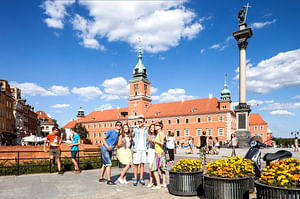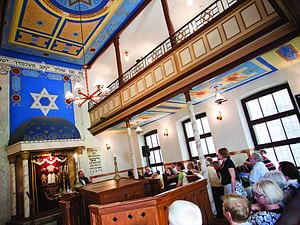The factory at Lipowa street was launched two years before the Second World War. In the autumn of 1939 it was confiscated from three Jewish owners and taken over by a Sudeten German, Oskar Schindle...
The factory at Lipowa street was launched two years before the Second World War. In the autumn of 1939 it was confiscated from three Jewish owners and taken over by a Sudeten German, Oskar Schindler (1908–74), a member of the NDSAP and most probably a collaborator of the Abwehr. Thanks to his extensive network of connections, the businessman won plenty of commissions, both civilian (pots, spoons, et cetera) and military (including mess kits, and later also ammunition shells) for his Deutsche Emailwarenfabrik commonly known as Emalia, which earned him a fair revenue.
Schindler employed Jews initially for economic reasons as they provided a cheap labour force. Most probably the establishment of the ghetto and the subsequent brutal deportations made the businessman aware that as a director of a prospering factory, he had an opportunity to help these people.
After the liquidation of the ghetto in March 1943, Schindler resorted to contacts and bribes to obtain a permit to set up a sub-camp of Płaszów labour camp on the premises of his factory. His staff now lived in barracks built around the factory, far from the sadistic commander of the camp, Amon Goeth, and his guards. The factory became a safe haven for around 1000 souls, including elderly and infirm Jews as well as children, who all lived in sanitary conditions that were much better than in the camp, and on better food rations.
The sub-camp in Emalia was forcibly liquidated when, facing a defeat in the war, the Nazis began to get ready for evacuation. Schindler reacted by opening a munitions factory in Brünnlitz (Nazi-occupied Czechoslovakia), where he employed “his” Jews. This is how he saved the lives of around 1100 people.
The wartime history of the factory and its then owner, Oskar Schindler, as well as the fate of the Jewish labourers he saved, inmates of the Plaszow labour camp, became known to the world thanks to Steven Spielberg’s film Schindler’s List from 1993.
Today, the administrative building of the former Emalia Factory that manufactured enamelware houses a branch of the Museum of Krakow. The permanent exhibition here portrays the German entrepreneur and “righteous among the nations” together with the lives of the Kraków Jews he saved, presented as part of the complicated history of the city during the Nazi German occupation of 1939–45. This is where the tumultuous history of the Second World War collides with everyday life, and private lifelines with the tragedy that affected the whole world.
















